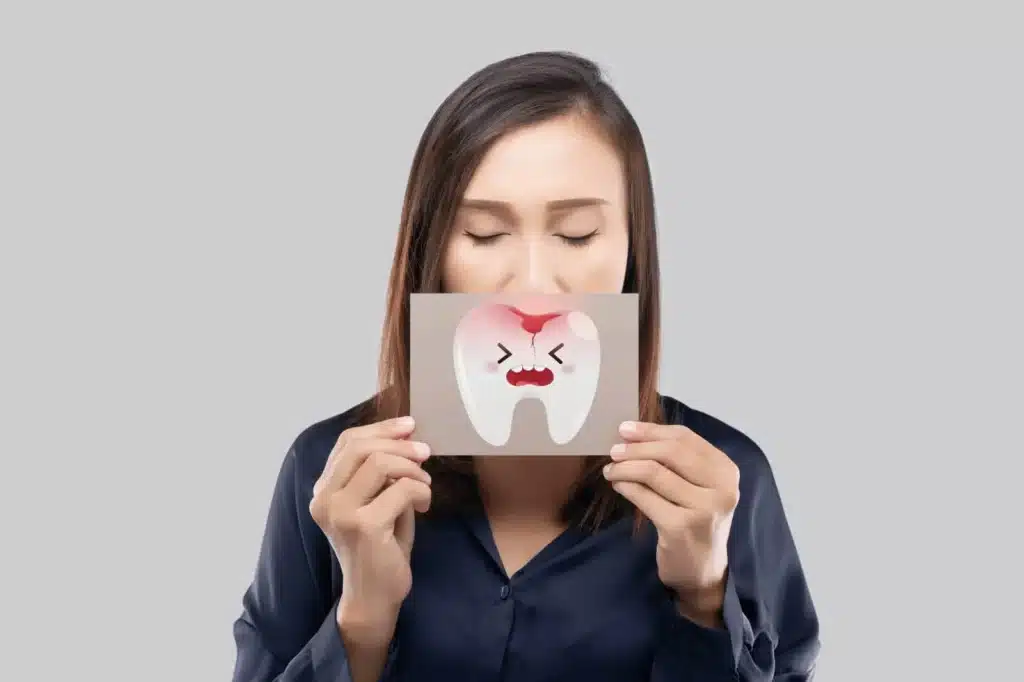Pulpotomy becomes necessary when the cavities damage the pulp inside your teeth. One can not ignore the importance of pulpotomy, as the damaged pulp can lead to severe infections. Read more to know the procedures and the needs of treatment.
Tooth Anatomy
Each tooth consists of distinct layers, with the pulp occupying a central role. This pulp, often called the tooth’s “nerve,” is a delicate inner core composed of connective tissues, blood vessels, and nerves. Its primary function is to nourish and maintain the tooth, ensuring its vitality. Understanding this pulp and its pivotal role in dental health is crucial when considering the necessity of a pulpotomy.
Pulpotomy
It is a dental procedure that partially removes the pulp tissue from the innermost part of a tooth, known as the pulp chamber. This is typically done when the pulp is infected or inflamed, often due to deep cavities, trauma, or other dental issues.
A pulpotomy aims to alleviate pain, remove the diseased portion of the pulp, and preserve the remaining healthy pulp to maintain the tooth’s function.
When is a Pulpotomy Necessary?
It becomes imperative when various dental issues arise, demanding swift attention.
Here are the critical scenarios where a pulp reduction may be indicated:
Severe Tooth Decay: A pulpotomy is often the solution when tooth decay delves deep, infiltrating the pulp. This procedure aims to salvage the remaining healthy pulp while removing the diseased portion.
Trauma or Injury: Accidents or injuries can result in a fractured tooth, exposing the pulp to potential infection. In such cases, a pulpotomy may be recommended to prevent further complications.
Infection: Dental infections, typically caused by untreated cavities, can lead to pulp inflammation and abscesses. A pulpotomy is crucial to eliminate the infection, alleviate pain, and restore oral health.

Signs You Need Pulpotomy
Recognizing the signs that signal the need for a pulpotomy is equally essential:
- Persistent, throbbing toothache, mainly when triggered by hot or cold stimuli.
- Swelling and tenderness in the gums around the affected tooth.
- Discoloration of the tooth, often turning it gray or black.
- Pus drainage near the affected tooth, indicating infection.
- Pressure sensitivity when biting or chewing.
Procedure
The procedure is a precise dental intervention that follows a systematic series of steps. Let’s explore the process:
Anesthesia and Preparation:
To commence, the dentist administers local anesthesia, ensuring the patient is comfortable throughout the procedure. After numbing the area, the tooth is isolated using a rubber dam, maintaining a sterile field.
Pulp Chamber Access:
With a drill, the dentist carefully accesses the pulp chamber, which is the inner sanctum of the tooth containing the pulp tissue. This step allows direct access to the affected pulp.
Removal of Damaged Tissue:
Here comes the crux of the pulpotomy. The dentist, with precision, extracts the diseased or damaged pulp. This step is crucial in halting the spread of infection or decay.
Restoration of the Tooth:
The tooth’s integrity is restored after pulp removal. This often involves filling the pulp chamber with a biocompatible material and sealing it. Sometimes, a crown may be placed to protect the tooth, especially if it’s a back molar.
Aftercare and Recovery
After undergoing a pulp removal from tooth, patients should anticipate a specific post-procedure experience:
- The intense pain decreases, offering relief and comfort.
- Post-pulpotomy discomfort is normal. Patients may experience mild soreness or sensitivity for a few days.
- Choose softer foods to prevent unnecessary pressure on the treated tooth.
- As your dentist recommends, pain relievers can help manage discomfort.
- Maintain meticulous oral hygiene, but be gentle around the treated area to avoid irritation.
- Regular check-ups are crucial. Your dentist will monitor the healing process and ensure long-term dental health.
Complications and Risks
It is generally a safe dental procedure but carries potential complications and risks like any medical intervention. Here’s what you should be aware of:
- Infection may not completely resolve, leading to persistent discomfort or swelling.
- Temporary pain or sensitivity is common post-pulpotomy but could signal an issue if it persists.
- Patients may experience allergic reactions to materials used during the procedure.

You must consult your dentist immediately and follow post-operation instructions to address these concerns.
Conclusion
The importance of pulpotomy in preserving dental health must be addressed. These procedures protect your teeth from damage and maintain oral health. Regular dental checkups often save you from post-operation complications. Contact Dentalsway for further information because getting a healthy smile is our priority.


